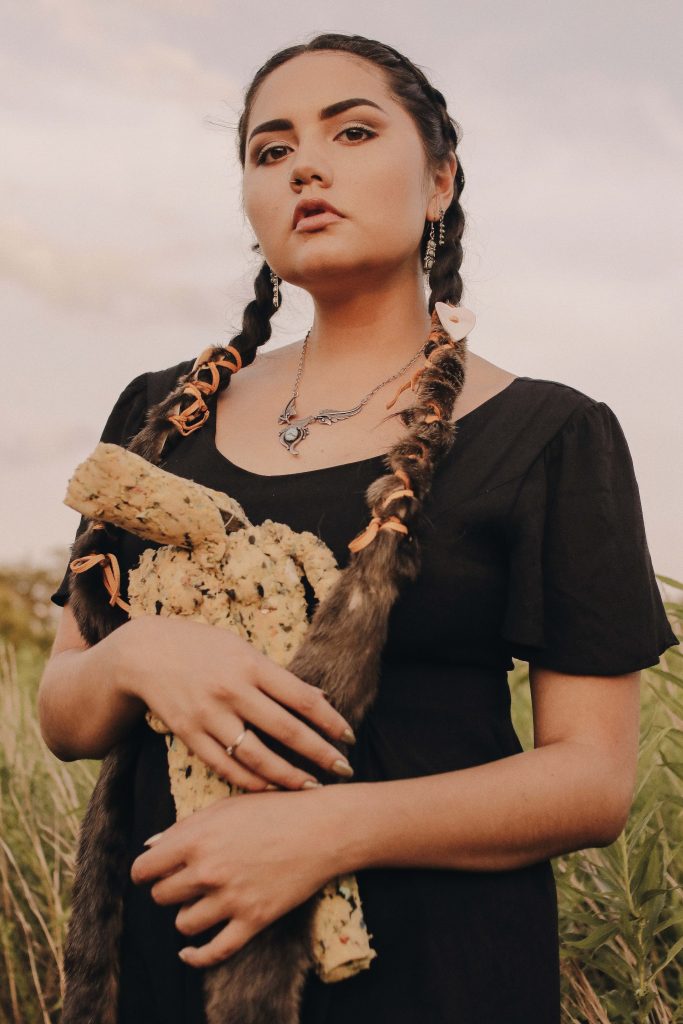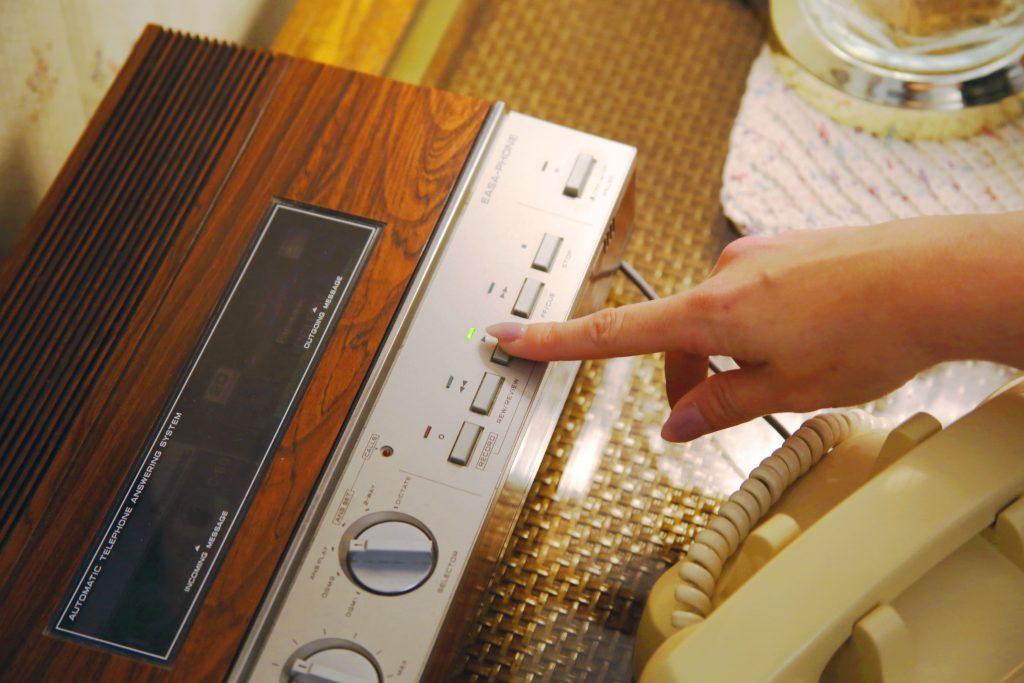
Emily Sue Laird is a visual artist, installation artist, illustrator, production designer, 3D printer, and just-about-everything-else-er based in Nashville. She graduated from Watkins in 2011, and in the time since, she’s tirelessly created work that blurs the lines between nature and technology, art and science, and the big, metaphysical knowns and unknowns that keep us up at night. Laird’s done commissioned work for everyone from West Elm to Jack Daniels to Bongo Java, and she’s also worked as a mentor through programs like Nashville Public Library, YMCA of Middle Tennessee, Nashville After Zone Alliance (NAZA), Make Nashville, and more.
Most recently, Laird’s turned her attention to working with the Adventure Science Center. She has two upcoming pieces at ASC: Eureka!, an exhibit that’s part of the Math Inspires Art series at ASC’s Forbes Gallery; and the Eureka Theater Mural, a permanent mural that Laird and ASC created with help from local young women and volunteers. We talked to Laird about the upcoming ASC work, fractals, and why the future may not look so bleak after all.

The list of disciplines you work in—sculpture, 3D printing, illustration, textile work, and more—is practically endless. Do you think we’re entering—or have already entered—a phase in which artists create as makers, rather than, say, as a painter, sculptor, or illustrator? Are the semantics and divisions surrounding different disciplines fading away?
These days everyone’s got an online presence, whether you’re chucking merch, showing off your collections/family/pets/thoughts, promoting events and brands, sharing work, or using social platforms themselves as new media. No matter what your main artform originally was, you’ve most likely become a photographer, digital editor, and self-publisher on top of that. We’ll always have semantics and divisions between disciplines; I don’t think that will ever go away, but the insanely fast pace of our world requires artists to be multidisciplinary in order to be successful.
I come from a family full of scrappy Southern women for whom “making” was a daily way of life. Growing up in rural West Tennessee, I was taught how to cook, sew, garden, and craft from a very young age, so those actions were always a consistent part of my life. When I began making art seriously and considering it as a career, techniques such as painting, sculpting, drawing, and design were tools added to a toolbox of skills with a foundation in traditional Southern homemaking. I don’t know if that comes across in my work, because my art tends to look more contemporary, but my upbringing had a profound effect on my affinity for creative pursuits. I was encouraged to study and learn and create, so that’s what I do. The medium doesn’t matter to me as much as the act of creation.
You’re a studio mentor at Studio NPL, a space at the Nashville Public Library where teens learn about music, design, tech, and pretty much any other maker-related skill they could want to learn. Do you consider passing down knowledge part of your creative practice?
Absolutely. I was fortunate to have found my artistic family in Nashville, because we have a uniquely supportive arts community here. From the day I decided to attend Watkins, I had wonderful mentors in my life who were able to guide and advise me on everything from school and business to family, love, and friendship. I consider mentorship to be an essential element of any life plan. No matter what you want to do, there are people out there who have done it before and who would be happy to share their wisdom and experiences with you.
While I enjoy teaching to a degree, I’m much more interested in fostering long-term mentor relationships with individuals who are passionate about creative pursuits and willing to put in the hard work and grueling hours that it takes to get anything meaningful accomplished. The best mentor-mentee relationships are mutual, with both sides contributing to as well as benefiting from the partnership. Those types of connections don’t happen every day.
You had young women help you with painting the Eureka Theater Mural, which is interesting considering art communities and STEAM communities are often male dominated. Do you think these communities are becoming more inclusive? And if not, what can we do to make them more inclusive?
Women have been studying and progressing science just as long as men have, but we have never had the same visibility in that field. Sadly, this happens often in the art world as well as countless other vocations. I’m thankful that many of these communities are finally becoming more inclusive, but we’ve still got a long way to go. Last week I came across an article about the Draw-a-Scientist study, which showed that schoolchildren are increasingly drawing scientists as females rather than almost exclusively as males, thanks in part to an increase in women being portrayed as scientists and mathematicians in popular media.
The study shows that one of the major things we can do to increase inclusion is representation. We have to consistently represent marginalized groups in these roles. We need to listen to and promote stories of women, indigenous people, people of color, people with disabilities, and those in the LGBTQI community, because we all contribute to society, and we all deserve representation. This is true in scientific fields as well as society as a whole.
The Adventure Science Center made a deliberate choice to include girls and women in the Eureka Theater Mural project from the beginning. We designed the grant proposal around the idea of working with middle-school and high-school girls enrolled in the Science Center’s Art2Stem & TWISTER programs for young women interested in pursuing STEAM careers. During February and March 2018, over fifty girls and women collaborated with me to paint the Eureka Theater Mural, including local middle schoolers, high schoolers, college students, educators, and my mom. We also had a few wonderful male volunteers, as well as the full support of Science Center staff, which made it a very inclusive and rewarding experience for me and hopefully for everyone involved.

Eureka!, your current exhibit at Adventure Science Center, draws inspiration from “fractals, cosmology, and the natural world to create remarkable UV-reactive artworks.” Walk us us through the inspiration and making of the series.
The work in Eureka! stems from a lifelong fascination with the natural world, mathematics, and science. I have always loved being outside and experiencing nature—I draw energy and inspiration from exploring outdoors. My free time is often spent hiking, biking, kayaking, gardening, or just sittin’ around outside and soaking it all in. As a kid in school I learned to love mathematics, and at some point, I began to appreciate math as a way of explaining the universe in comprehensible terms.
I believe that mathematics provide us a glimpse of the spiritual realm by empowering humans to translate the rhythms of the natural world. This is especially apparent when looking at fractals and the golden spiral, because these shapes follow the rules of divine proportion to illuminate our universe’s infinite repetitive nature of self-similarity. Fractals can be seen in veins, rivers, branches, lightning, snowflakes, coastlines, weather patterns, roadways, footpaths, and countless other aspects of the natural and artificial world. In mathematics, fractals can be used to model structures in which similar patterns recur at progressively smaller scales, and in describing partly random or chaotic phenomena such as crystal growth, fluid turbulence, distribution of information, and galaxy formation.
The Eureka Theater already had UV lights installed for a hilariously ’90s black-light painting on canvas that used to sit awkwardly across one corner of the room but has now been removed. When I realized that the mural could have multiple layers of lighting options, my mind exploded with possibilities. We decided the mural would be able to be viewed in at least three different lighting scenarios: natural (incandescent or fluorescent), ultraviolet (black light), and phosphorescent (glow-in-the-dark).
Since I had very little experience painting with UV-reactive or phosphorescent paints, I proposed that first I would create four large painted panels where I could work out the concepts for the mural and figure out which specialty paints would work best. The series is titled Eureka! because it was a way for me to have many “Aha!” moments figuring out what we would paint in the Eureka Theater and how it could be painted. The Science Center was also working on a planetarium show about fractals, so the concepts around painting a math-based mural fell right into place. The final mural will be an amalgamation of the concepts and imagery presented in the four panels, titled Existential Cosmology, Remedial Divination, Tennessee Waterways, and Eureka Mural Prototype.

Do you feel artists have a responsibility to evolve and update their work as new materials and methods emerge?
In my mind, the only responsibility an artist has is to make honest work that doesn’t hurt other people. I don’t think it matters so much what materials you use, as long as you are making work. For a long time I resisted the pull of technology. The first few years of my college experience were spent working exclusively in classical and traditional art-making techniques such as drawing, painting, ceramics, sewing, writing, and film photography. It wasn’t until 2009 that I discovered 3D printing and began to get involved in more technologically driven artforms, but that interest has always been rooted in a conventional fine arts training and exists in both conversations. The things I like to 3D print most are planters, jewelry, picture frames, miniatures, and scale models of people, which are all very crafty objects. It’s the kind of thing you’d find on Etsy or at a flea market, but in my case a robot is doing a lot of the handiwork.
Are there any emerging technological advancements that will impact the future of the art world, or maybe become ubiquitous in years to come? Are there any advancements that you plan to use in your own work?
In 2011 I suffered a severe back injury that completely changed the way I live. While I’m still very active and able to work, I have to be very careful about the way I use my body. Traditional methods of art-making are surprisingly physical, especially things like carving, building, and painting. 3D printing has provided me a means to rapidly prototype incredibly detailed sculptures in a fraction of the time and physical effort that hand-making these objects would require. Furthermore, these technological advancements are pushing media forward by allowing people to create work by methods that were previously impossible. I’ve used robots and printers to create devices that help me make other types of work such as painting, drawing, and embroidery. The possibilities seem endless, which gives me hope.
Laird’s Eureka! series will be on display at the Adventure Science Center through May 13 and is accessible with general admission. The Eureka Theater Mural is a permanent installation and will be accessible during the Science Center’s upcoming adults-only event, Way Late Play Date, on Thursday, April 26 from 6:30 p.m. to 10:00 p.m.
Suggested Content

Chelsea Kaiah James
Why aren't there any ears sculpted onto the presidents of Mt. Rushmore? Because American doesn't know how to listen. - Unkown

Contributor Spotlight: Dylan Reyes
When I create, I often think of what Johannes Itten said, “He who wishes to become a master of color must see, feel, and experience each individual color in its endless combinations with all other colors.”. I’m also inspired frequently by love and loneliness and want folks consuming my work to be encouraged to start paying attention to the little details in everyday life, appreciate the simple things, and let them eventually inspire you! Ultimately, I’m just trying to become a mother fuckin master of color.

Secondhand Sorcery
A look inside the beautifully cheesy world of Crappy Magic
